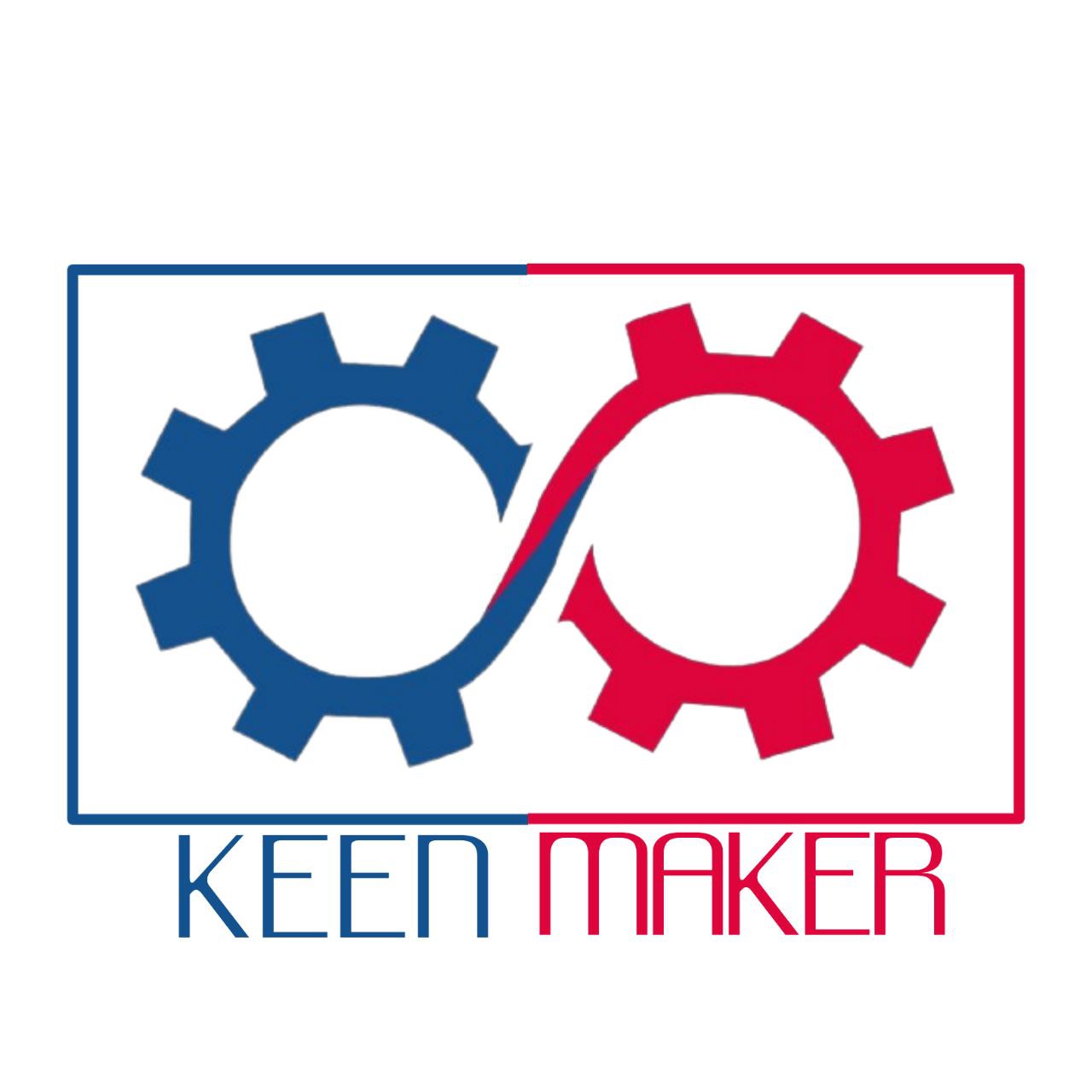Have you ever felt overwhelmed by the complexity of 3D printing software? You’re not alone. Many beginners find themselves lost in a sea of technical jargon and complicated interfaces, struggling to bring their creative visions to life. The frustration of failed prints and wasted materials can quickly dampen your enthusiasm for this exciting technology.
But what if you could easily create, edit, and prepare 3D models without breaking the bank? Imagine having access to user-friendly tools that guide you through the process, helping you troubleshoot common issues and improve your skills along the way. The good news is, such solutions exist!
In this article, we’ll explore 10 of the best free 3D printing software for beginners. Whether you’re just starting out or looking to upgrade your toolkit, these programs will help you navigate the world of 3D printing with confidence. Ready to transform your ideas into tangible objects? Let’s dive in!
Table of Contents
Overview
Here’s a quick presentation of the Top 10 Free 3D Printing Software for Beginners:
- Tinkercad: Online, beginner-friendly block-building
- FreeCAD: Open-source, parametric modeling
- OpenSCAD: Programming-based 3D modeling
- Slic3r: Open-source slicer software
- Cura: Versatile slicer for all
- Blender: Comprehensive 3D creation suite
- Wings 3D: Simple, powerful polygon modeling
- SculptGL: Browser-based digital sculpting
- SketchUp Free: Intuitive architectural modeling
- BlocksCAD: Code-based 3D design learning
Types of 3D Printing Software
When diving into the world of 3D printing, you’ll encounter various types of software, each serving a unique purpose in the creation process. Let’s break them down:
- 3D Modeling Software is your digital canvas, allowing you to bring your ideas to life from scratch. Think of it as the foundation of your 3D printing journey. With these tools, you can design anything from simple geometric shapes to intricate mechanical parts.
- Slicers and 3D Printer Hosts form the bridge between your digital model and the physical world. Slicers transform your 3D model into a set of instructions that your printer can understand, while printer hosts control the actual printing process. They’re essential for turning your digital creations into tangible objects.
- Digital Sculpting and Polygon Modeling Software takes your creativity to the next level. These advanced tools let you shape and mold digital clay, creating organic forms and complex structures that would be challenging to achieve with traditional modeling software. Whether you’re crafting characters for animation or designing unique art pieces, these programs offer unparalleled flexibility.
Understanding these software types is crucial for choosing the right tools for your projects.
Features to Consider When Choosing 3D Printing Software
When selecting 3D printing software, especially as a beginner, it’s crucial to consider several key features that will shape your experience.
- First and foremost, ease of use should be at the top of your list. Look for software with an intuitive interface and a gentle learning curve. This will help you get started quickly without feeling overwhelmed by complex tools and menus.
- Next, consider compatibility with various 3D printers and file formats. The software you choose should work seamlessly with your printer and support common file types, ensuring you’re not limited in your projects.
- Lastly, don’t overlook customization and editing capabilities. As you grow more comfortable with 3D printing, you’ll want software that offers a range of tools to refine and personalize your designs.
These features will allow you to evolve from basic projects to more complex creations as your skills improve. By keeping these factors in mind, you’ll be better equipped to choose 3D printing software that meets your needs and supports your growth in the field.
What feature do you think is most important for your 3D printing journey? Leave a reply in the comment section at the end.
Top 10 Free 3D Printing Software for Beginners
Ready to explore the world of 3D printing without breaking the bank? We’ve curated a list of the top 10 free 3D printing software options perfect for beginners. These user-friendly tools will help you dive into 3D modeling, slicing, and printing with confidence. Let’s take a closer look at each one:
3D Modeling Software
Tinkercad
Tinkercad stands out as a go-to 3D printing software for newcomers to the field. This free, online platform simplifies the complex world of 3D modeling with its intuitive block-building concept. Imagine it as digital Lego for adults!

Tinkercad – 3D design home interface
Perfect for beginners and hobbyists alike, Tinkercad offers a range of tools and features that make creating and editing 3D models surprisingly straightforward.
Its web-based nature means you can access your projects from anywhere, anytime. Whether you’re designing a custom phone case or prototyping a new invention, Tinkercad’s user-friendly interface and extensive shape library empower you to bring your ideas to life without the steep learning curve.
FreeCAD
FreeCAD is a powerhouse among free 3D printing software options, offering a robust set of tools that cater to both beginners and seasoned professionals.
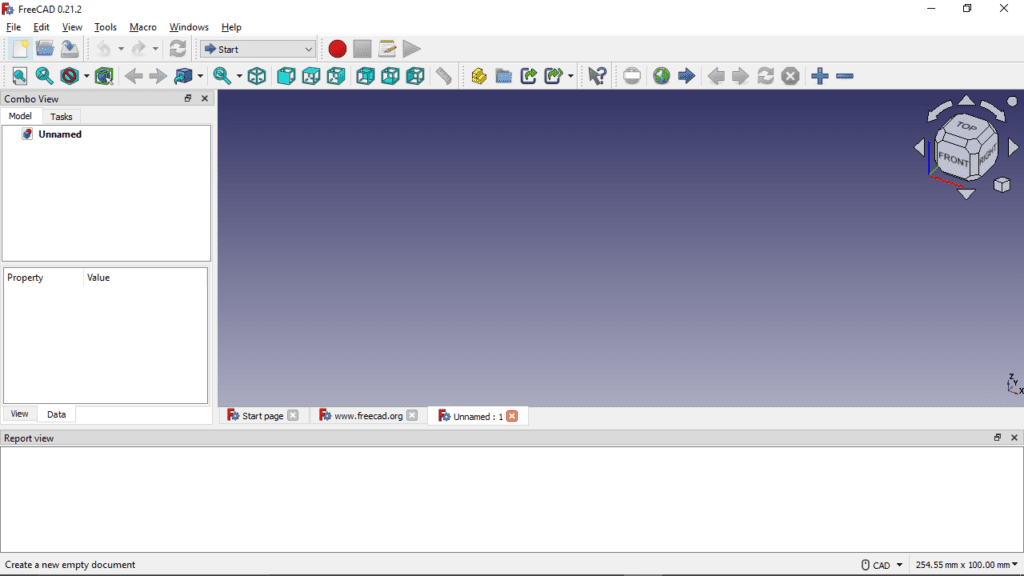

FreeCAD 3D design – Home interface
As an open-source platform, it benefits from continuous community-driven improvements and updates.
What sets FreeCAD apart is its parametric modeling approach, allowing you to easily modify your designs by adjusting their parameters. This feature is particularly valuable for creating technical parts or iterative prototypes.
While the learning curve might be slightly steeper than some alternatives, the payoff in terms of design flexibility and precision is immense. From architectural models to complex mechanical parts, FreeCAD’s extensive customization options empower you to tackle a wide range of projects.
OpenSCAD
OpenSCAD takes a unique approach to 3D modeling software by merging programming with design.
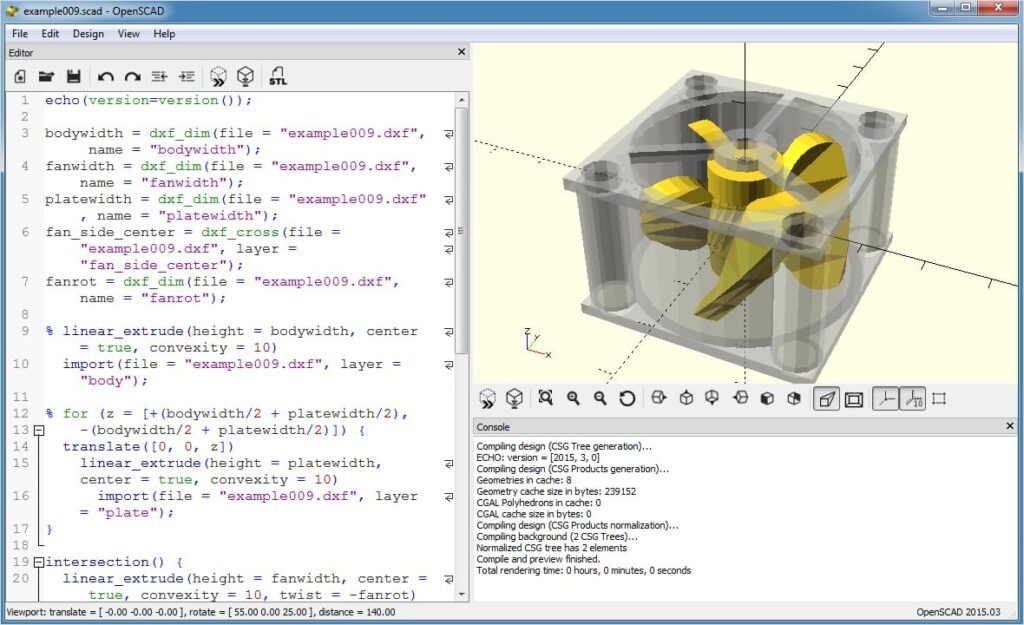

OpenSCAD – Interface (Source: i.materialise)
This free, open-source tool uses a specialized programming language to create 3D models, making it an intriguing option for those who enjoy coding or want to learn.
Don’t let the word “programming” intimidate you – OpenSCAD’s syntax is designed to be accessible, even for beginners. By describing your model with code, you gain precise control over every aspect of your design. This method excels at creating complex shapes and parametric models that can be easily adjusted by tweaking a few variables.
Whether you’re crafting intricate gears or designing modular structures, OpenSCAD’s text-based approach offers a level of repeatability and accuracy that’s hard to match with traditional modeling software.
Slicers and 3D Printer Hosts
Slic3r
Slic3r is a game-changer in the world of 3D printing, offering a powerful yet free slicer software that’s perfect for beginners and hobbyists alike.
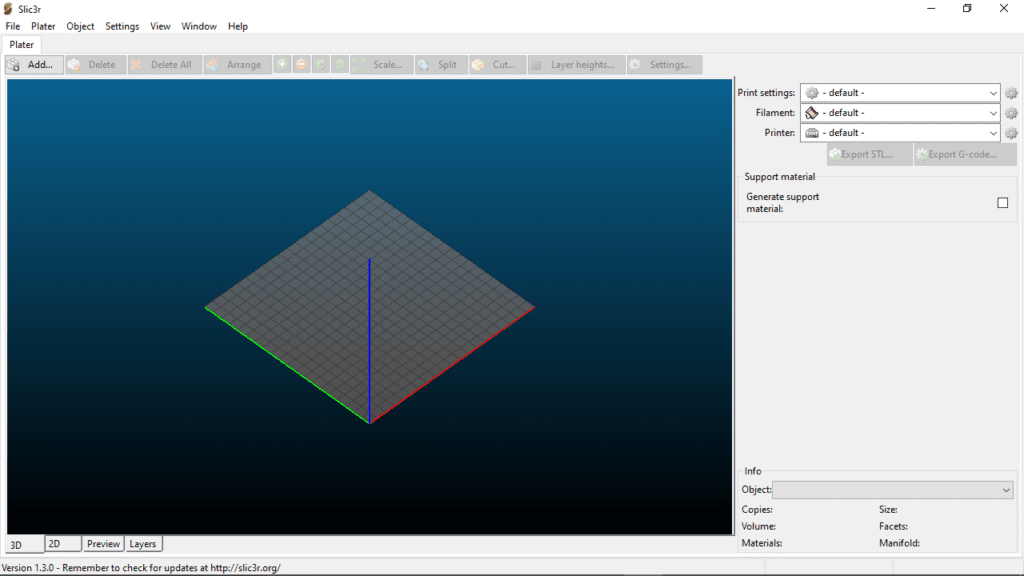

Slic3r free slicer – Interface
This open-source tool takes your 3D models and transforms them into printable files, acting as the crucial bridge between design and reality.
What sets Slic3r apart is its balance of user-friendliness and advanced features. You’ll find a range of tools to customize and refine your prints, from adjusting layer heights to optimizing support structures.
As you grow more comfortable with 3D printing, Slic3r grows with you, offering more advanced settings to explore. Its active community also means you’ll find plenty of resources and tips online.
Cura
Cura stands out as a versatile slicer software that caters to both beginners and professionals in the 3D printing world. This free, open-source tool excels at transforming your 3D models into print-ready files with remarkable precision.
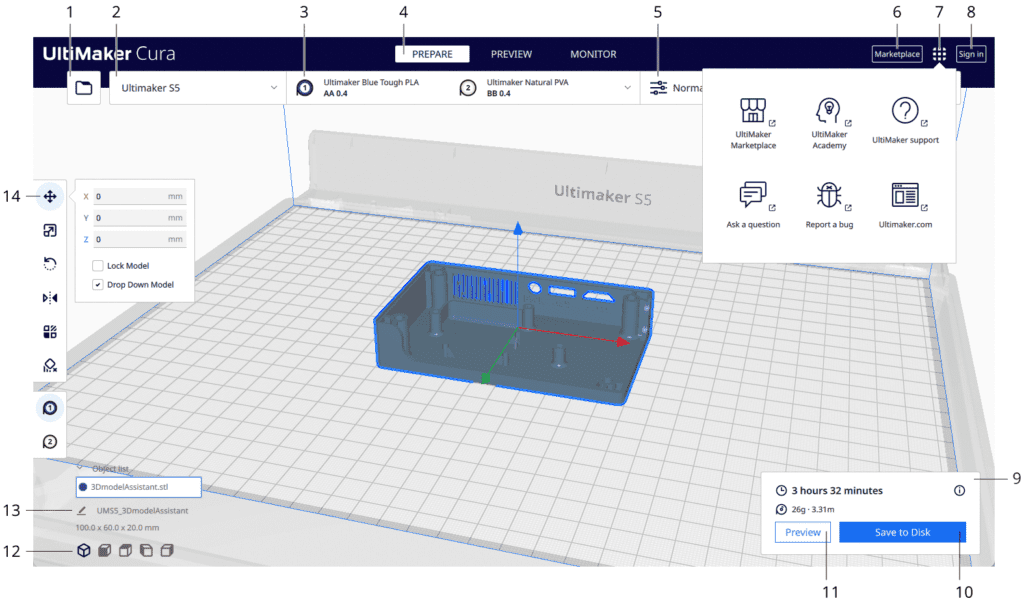

Ultimaker Cura free slicer – Annotated interface (Source: Ultimaker)
What makes Cura a favorite among users is its intuitive interface coupled with a wealth of advanced features. Newcomers will appreciate its straightforward setup and quick-start profiles, while seasoned makers can dive deep into layer-by-layer customization.
Cura’s ability to optimize print settings for speed, quality, or strength gives you full control over your projects. Plus, its wide compatibility with various 3D printers ensures you’re not limited by hardware choices.
Digital Sculpting and Polygon Modeling Software
Blender
Blender is a masterpiece in the world of 3D creation software, offering an impressive suite of tools for digital sculpting and polygon modeling – all for free.
This open-source platform caters to both beginners and professionals, providing a scalable learning experience as you grow your skills. While its extensive feature set might seem daunting at first, Blender’s user-friendly interface and robust community support make it accessible to newcomers.
From basic 3D printing models to complex animated characters, Blender’s versatility shines through. Its customization options allow you to tailor the workspace to your needs, streamlining your workflow as you tackle increasingly ambitious projects.
Wings 3D
Wings 3D is a hidden gem in the world of 3D modeling software, particularly appealing to beginners and hobbyists. This free, open-source tool strikes a perfect balance between simplicity and functionality.


Wings 3D Home Interface
Its clean, uncluttered interface welcomes newcomers, while its powerful polygon modeling capabilities satisfy more experienced users.
Wings 3D shines in its approach to subdivision modeling, making it easy to create smooth, organic shapes without getting lost in complex menus. Whether you’re designing a character for 3D printing or crafting a unique piece of digital art, Wings 3D’s intuitive tools and customization options help bring your vision to life.
Have you ever felt overwhelmed by other 3D modeling software? Wings 3D might be the approachable alternative you’ve been looking for.
SculptGL
SculptGL brings the art of digital clay sculpting to your browser, making it an exceptional choice for beginners and hobbyists venturing into 3D sculpting software.
This free online tool offers a surprisingly robust set of features that rival many desktop applications. Its user-friendly interface invites you to dive right in, molding and shaping your creations with intuitive brush strokes.
From organic forms to intricate details, SculptGL’s diverse toolset empowers you to bring your imagination to life.
The software’s real-time rendering allows you to see your work take shape instantly, providing immediate feedback as you sculpt.
Have you ever wanted to try digital sculpting but felt intimidated by complex software? SculptGL’s accessibility might just be the perfect starting point for unleashing your creativity in the 3D space.
Other Notable Software
SketchUp Free
SketchUp Free brings professional-grade 3D modeling software within reach of beginners and hobbyists. This web-based version of the popular SketchUp platform offers a robust set of tools that make creating 3D models surprisingly intuitive.
Its user-friendly interface and drag-and-drop functionality allow you to quickly bring your ideas to life, whether you’re designing furniture, planning home renovations, or creating models for 3D printing.
SketchUp Free shines in its ability to transform 2D shapes into 3D objects with just a few clicks. While it may lack some advanced features of its paid counterparts, the free version provides ample resources for most hobbyist projects.
Have you ever felt intimidated by complex 3D modeling software? SketchUp Free’s approachable design might be just what you need to start turning your 3D ideas into reality.
BlocksCAD
BlocksCAD is a unique entry in the world of 3D modeling software, blending the simplicity of block-based programming with the creativity of 3D design.
This free online tool is a perfect starting point for beginners and hobbyists who want to dip their toes into 3D modeling without feeling overwhelmed.
By using a familiar drag-and-drop interface similar to Scratch programming, BlocksCAD makes the transition from 2D to 3D thinking remarkably smooth. You’ll find yourself stacking virtual blocks to create complex shapes and models in no time.
What sets BlocksCAD apart is how it subtly introduces coding concepts as you design, making it an excellent educational tool for those interested in both 3D printing and programming.
Have you ever thought about combining coding with 3D modeling? BlocksCAD offers an engaging way to explore both skills simultaneously.
Getting Started with 3D Printing Software
Ready to dive into the world of 3D printing? Here’s how to get started with 3D printing software:
- Choose software that matches your skill level and needs. Consider user-friendly options like Tinkercad for beginners.
- Dive into tutorials and online courses. Many software providers offer free resources to help you learn the basics.
- Practice, practice, practice! Experiment with different tools and features to build your skills.
- Connect with the community. Join online forums and groups to share experiences, ask questions, and learn from fellow enthusiasts.
- Start simple. Begin with basic designs and gradually tackle more complex projects as you gain confidence.
Remember, every expert was once a beginner. Don’t be afraid to make mistakes – they’re part of the learning process.
Which software are you most excited to try first? Leave a reply in the comment section at the end.
Conclusion
Embarking on your 3D printing journey doesn’t have to be daunting or expensive, thanks to the top 10 free 3D printing software options we’ve explored.
From user-friendly platforms like Tinkercad to more advanced tools like Blender, there’s something for every beginner, regardless of your starting point or ultimate goals.
Remember, the key to success lies in choosing software that aligns with your needs and learning style. As you dive into this exciting world, don’t hesitate to experiment with different tools, seek out tutorials, and engage with the vibrant 3D printing community.
With practice and persistence, you’ll soon be bringing your creative visions to life in three dimensions.
Which of these software options resonates most with your 3D printing aspirations? The adventure begins with your first design – so why not start today?
